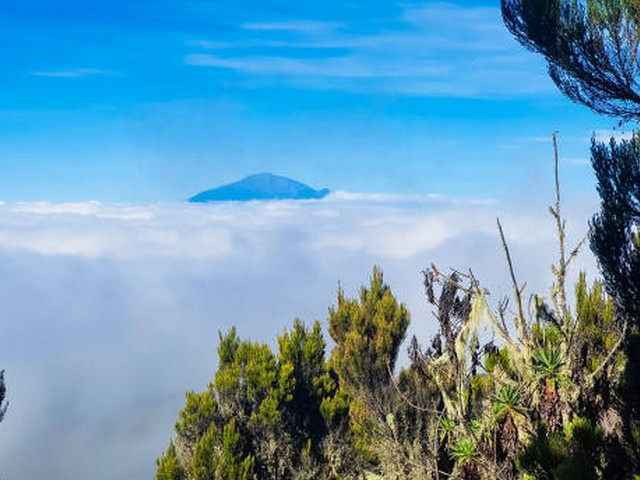Educational Materials For Planning A Kilimanjaro Climb with KCTE
Embarking on a journey to climb Mount Kilimanjaro is not just a physical endeavor but a voyage of knowledge and preparation. At the Kilimanjaro Centre for Trekking and Ecotourism (KCTE), we believe that an informed climber is an empowered climber. Today’s post is designed to serve as your comprehensive guide, filled with essential educational materials that will aid in planning your Kilimanjaro summit with confidence and excitement. Let’s step into the heart of Africa and prepare for an adventure of a lifetime with KCTE!
Why Proper Planning is Key to Conquering Kilimanjaro
Climbing Kilimanjaro, the roof of Africa, is a dream for many adventurers worldwide. However, the success of your climb hinges significantly on the thoroughness of your preparation. Understanding the mountain’s environment, the physical demands, the cultural significance, and the logistical details can transform your experience from merely enduring to thoroughly enjoyable and enlightening.
Understanding Kilimanjaro
The Geography and Climate of Kilimanjaro
Kilimanjaro is not just a mountain; it’s a mosaic of ecological systems that vary dramatically from the savannah at its base to the arctic conditions at its peak. Familiarize yourself with the five climatic zones you will traverse – cultivation, rainforest, heath, alpine desert, and arctic – and understand how these conditions can affect your climb.
Cultural Insights
Mount Kilimanjaro is steeped in local Chagga culture. Learning about the local customs, language, and traditions not only enriches your climbing experience but also helps you connect more deeply with your guides and porters, who are predominantly from local communities.
Physical and Mental Preparation
Training Tips for Kilimanjaro
Your physical preparation should include cardiovascular, strength training, and hiking practice. However, mental stamina is equally important. Prepare yourself mentally to deal with high altitudes and long trekking days. Educational materials such as training guides, workout plans, and personal accounts of Kilimanjaro climbs can be incredibly beneficial.
Health and Safety on the Mountain
Understanding the signs of altitude sickness and knowing the proper steps to mitigate it are crucial. Equip yourself with knowledge about necessary vaccinations, travel insurances, and safety protocols to ensure a healthy and safe journey.
The Routes to the Top
Each route up Kilimanjaro offers a different experience. From the popular Marangu route with its hut accommodations to the scenic Machame route known for its stunning vistas, choosing the right path plays a pivotal role in your climb’s success. Detailed route guides and comparison charts are invaluable educational materials that can help you make an informed decision.
What to Pack
Gear List
A comprehensive packing list is your best friend in ensuring you have all essentials covered. From the right type of boots and layering options to accommodate the varying temperatures to specific gear like headlamps and trekking poles, knowing what to pack can make or break your climbing experience.
Nutrition and Hydration Strategies
Learn about the types of food and the amount of water intake required to maintain energy levels and proper hydration throughout your trek. Educational materials on nutrition can provide insights into how to best fuel your body for high-altitude trekking.
Navigating the Legal and Environmental Aspects
Permits and Regulations
Stay updated on the necessary permits, park fees, and regulations. This not only ensures a smooth trekking experience but also aids in respecting and preserving the natural and cultural heritage of Kilimanjaro.
Conservation Efforts
As responsible climbers and lovers of nature, understanding and participating in conservation efforts is vital. Educate yourself about the flora and fauna of Kilimanjaro, and how you can contribute to sustaining its beauty and biodiversity.
Personal Stories and Insights
Nothing prepares you better than the first-hand accounts of fellow climbers. Reading blogs, watching documentaries, and browsing through photo essays can provide realistic expectations and valuable insights, helping you to better plan your climb.
FAQs
What is the best time of year to climb Kilimanjaro?
The best times are during the dry seasons, from late June to October and from late December to early March.
How fit do I need to be to climb Kilimanjaro?
A moderate level of fitness is required. It’s advisable to engage in a fitness regime months before your trip to build endurance and strength.
Can I climb Kilimanjaro without a guide?
No, climbing Kilimanjaro without a registered guide is not permitted. This regulation ensures safety for all climbers and employment for local guides.
How long does it take to climb Kilimanjaro?
It typically takes about 5 to 9 days depending on the route chosen. Selecting a longer route can help with acclimatization and increase your chances of reaching the summit.
Why Choose KCTE for Your Kilimanjaro Adventure?
At Kilimanjaro Centre for Trekking and Ecotourism, we pride ourselves on providing not only guided climbs but a full immersive experience. Our expert guides, comprehensive pre-climb training, and post-climb services ensure that you are well prepared, safe, and inspired throughout your journey.
We invite you to book your Kilimanjaro climbing adventure with us at KCTE. Let us help you turn your dream of conquering Kilimanjaro into a reality with knowledge, preparation, and the spirit of adventure. For more information, visit our website or contact us directly. Climb smart, climb safe, and reach the peak with KCTE!




